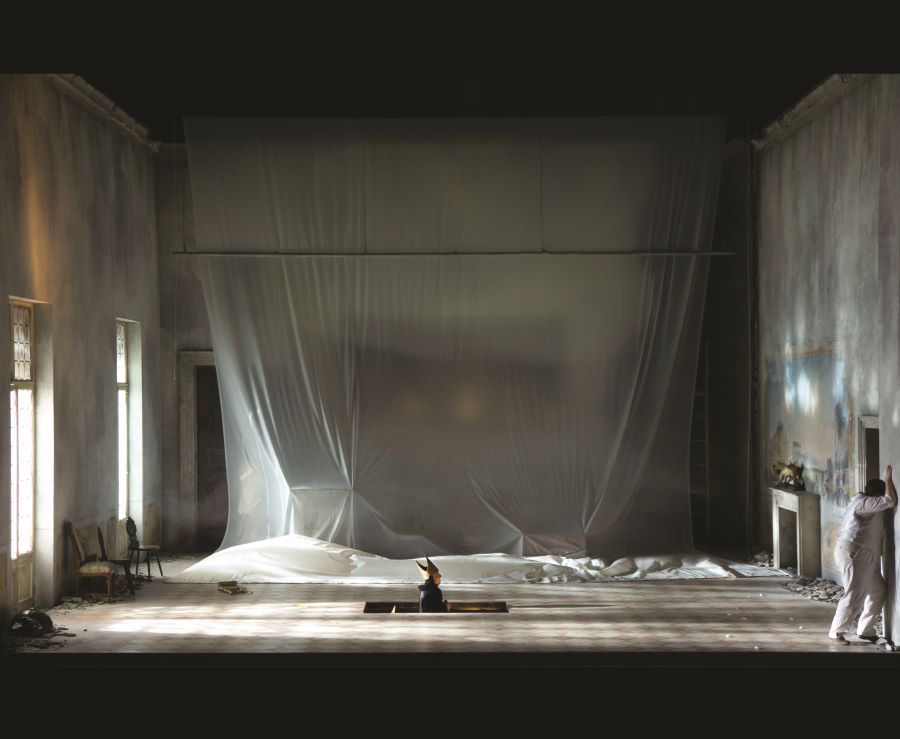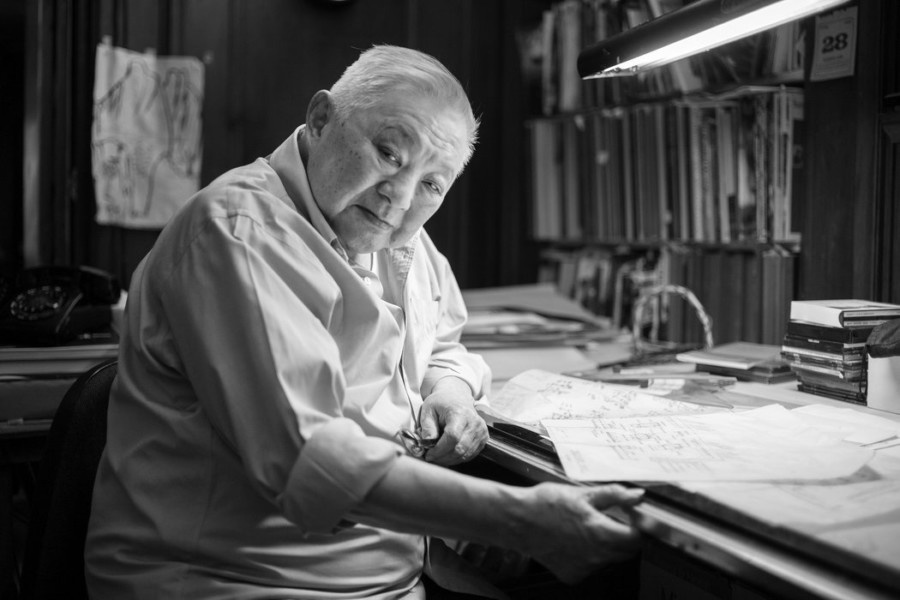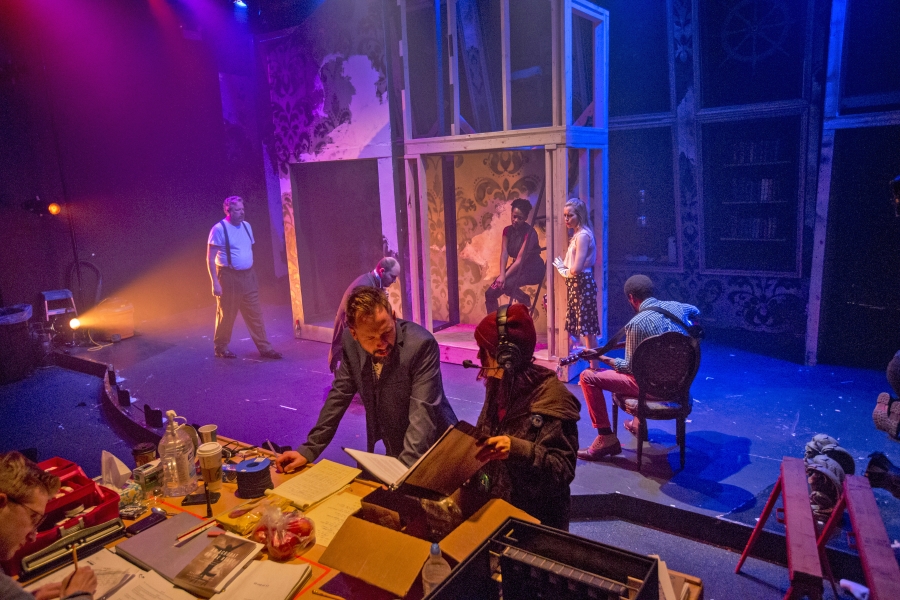Scenic design is not just visual but tactile, and written descriptions are no match for photo or video documentation. Accordingly, books about design sometimes lack the energy that sparks from seeing the art itself.
Two new books on designers and production workers come to life not only through photography, but because they put artists and laborers at the forefront of the conversation.
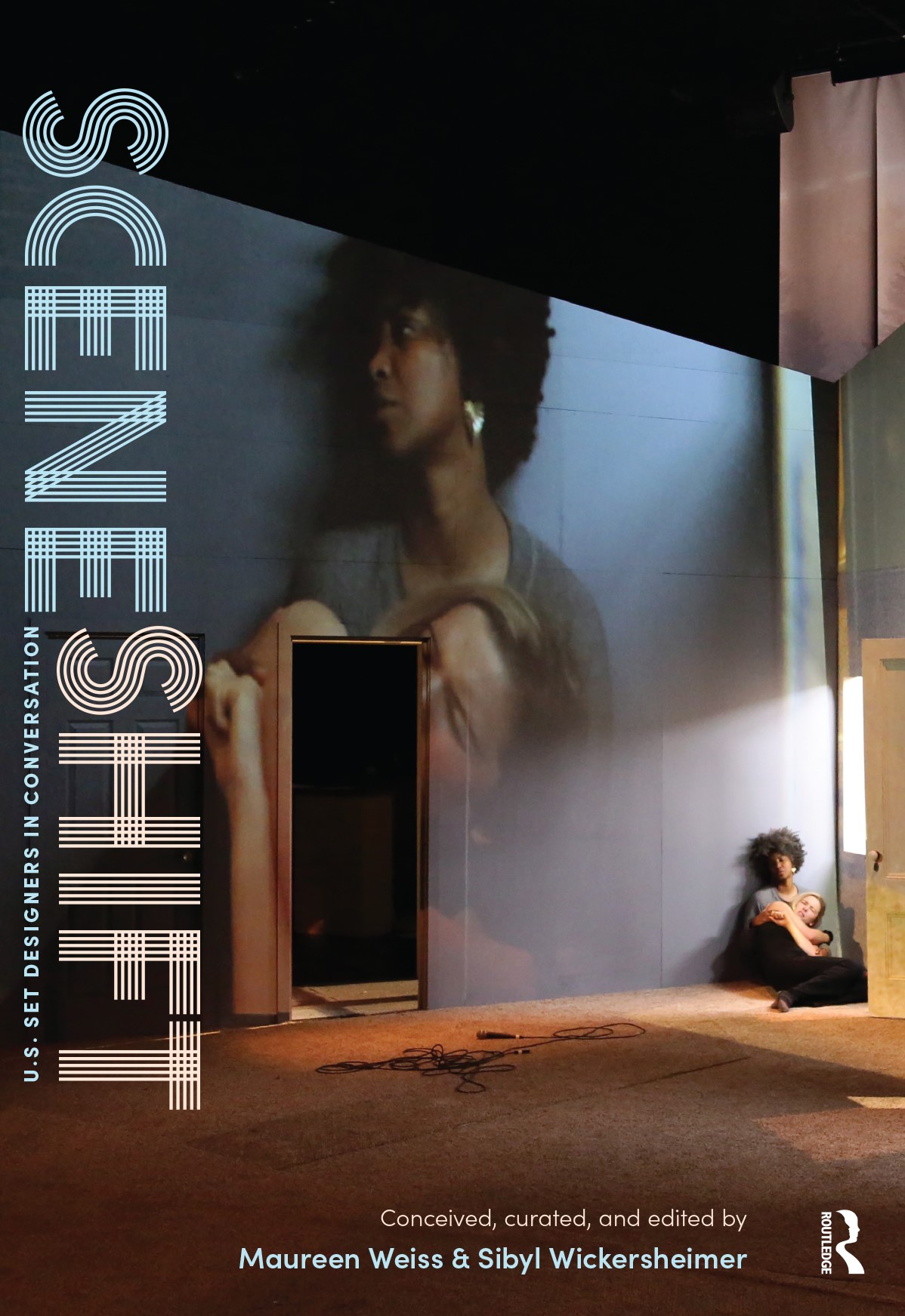
The images that accompany the dialogues in Scene Shift: U.S. Set Designers in Conversation are high-quality, printed on glossy pages I feared staining with fingerprints. Though the images are ideal when held in your hands in a hard copy, an e-book version is available (and may be preferable for theatre students hauling many textbooks). As scenic design is best appreciated in the flesh, artists and editors Sibyl Wickersheimer and Maureen Weiss also co-curated an exhibit inspired by the book at the University of Southern California’s Fisher Museum of Art earlier this year, featuring the work of many of the interviewed designers.
Despite the beauty of the images, Scene Shift’s layout often feels awkward, adhering to a voice that seems more appropriate for a brand than a book. Certain passages from interviews are bolded, underlined, or otherwise highlighted (which does allow for easy skimming, a design tactic with both pros and cons, especially for students). The introduction ends with a cloud-like image of interview quotes, giving the impression of a report analysis rather than a conversation among artists. These aesthetic choices don’t lessen the impact of the designers’ words collected here, but the format feels tired by the conclusion.
The book is also a snapshot of a Covid-era moment when few designers were working within the four walls of a theatre, but instead were plying their trade outdoors, online, or not at all. Wickersheimer and Weiss sent out survey questions to 50 designers, then held a series of conversations between June 2020 and January 2021, when most theatres were shut down to prevent the spread of Covid and artists were grappling both with how to pay their bills and how (or whether) to return to an industry built on the backs of undervalued laborers. Though advocating for change in the theatre was not a revolution that came out of nowhere in 2020, the moment was inarguably electric, with workers across the industry claiming their power more loudly and unapologetically. Neither the work nor the conversations documented by Scene Shift’s designer cohort are over; Wickersheimer and Weiss invite readers to contribute their own stories via the book’s website, possibly for a future edition.
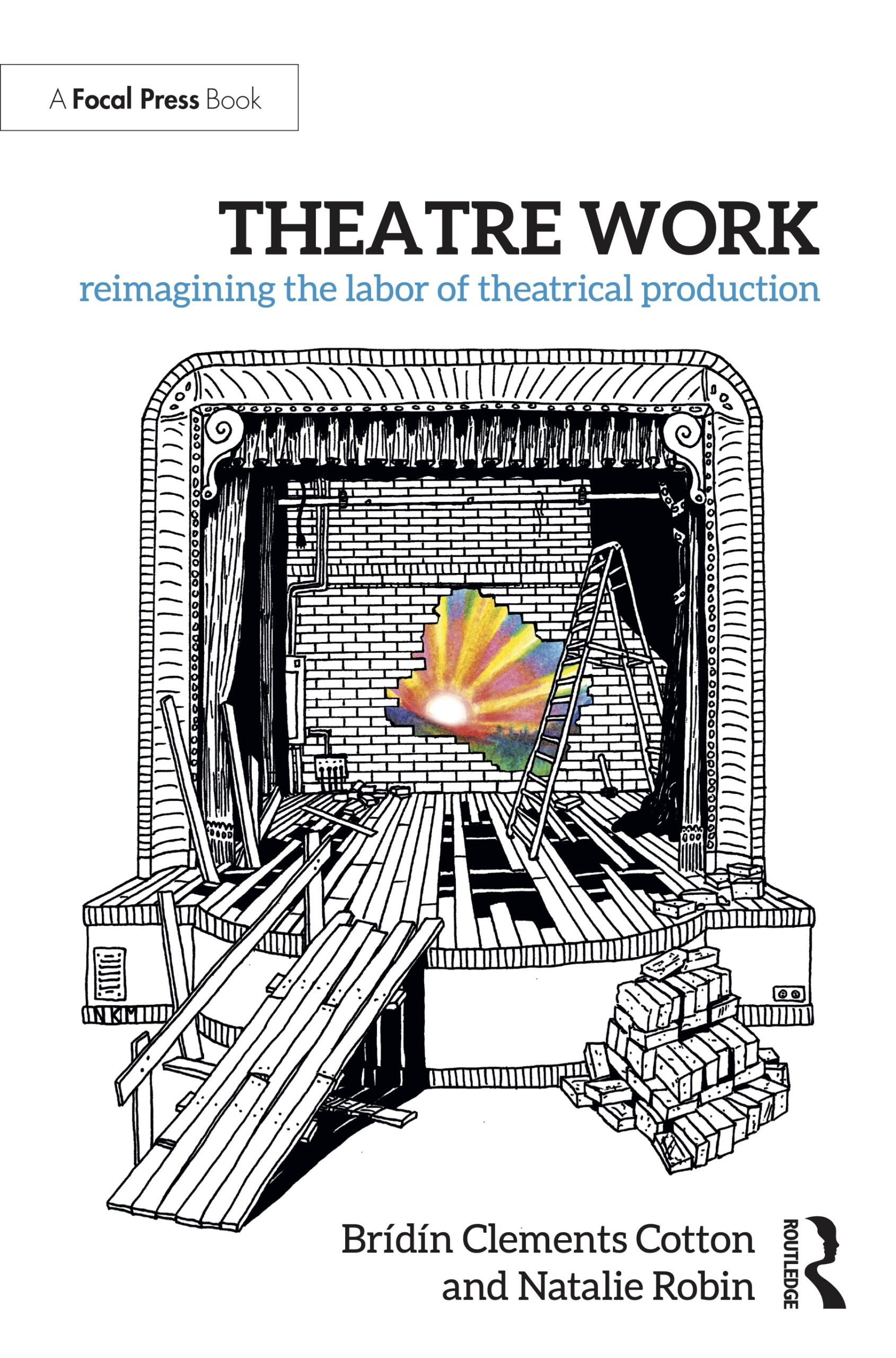
Wickersheimer and Weiss’s book isn’t explicitly about rethinking design practices from a labor perspective, though the designers touch on issues of workplace equity and on the dysfunction of a culture that conflates commitment with compensation, as if passion were its own reward. (How many of us have been told that if we really wanted to work in theatre, we would have to accept unfair or unsafe conditions without protest?) In this sense, Scene Shift makes a suitable companion to Brídín Clements Cotton and Natalie Robin’s Theatre Work: Reimagining the Labor of Theatrical Production. This well-researched book is more traditionally academic in tone, consulting and conducting a variety of surveys in addition to news reports (including some from this magazine) and archival research. Cotton and Robin are quick to point out that the majority of the country’s production workers are not covered by the theatre industry’s unions, and that such representation could entitle them to better pay, safety protocols, and other bargaining measures. (Robin is an organizer with United Scenic Artists, Local USA 829, IATSE).
Like most American institutions, however, our labor unions started out segregated and continue to grapple with legacies of racism; Theatre Work outlines the discrimination that early 20th-century workers faced, not only in the unpredictable workplace of the theatre but within their unions, which in some cases forced them into segregated auxiliaries. Acknowledging this ugly history is not anti-union, and neither is the book. Instead of simply lauding individuals who have made change within an inequitable system, Cotton and Robin advocate for retooling that system, which begins with the recognition of past and ongoing harms. This work builds on efforts engaged by artist-activists in 2020 and before, from parent and caregiver workers to anti-racist educators.
Though the work isn’t new, Theatre Work consolidates data, analyses, and interviews about production workers’ lived experiences to provide a more comprehensive look at labor in theatre for students, arts administrators, and scholars. In the back of the book, Cotton and Robin include the surveys they designed with data analyst Wayne Carino and sent out in the summer of 2022—one for production workers and one for employers. The former collected demographic information and asked about unpaid internships, below-minimum-wage work, time off, the controversial 10-out-of-12 system, and workplace safety, among other topics. The employer survey inquired about hiring processes, intern training, and whether human resources staff are available to support production workers on contract.
This question neglects to note that many nonprofit theatres and other organizations do not employ full-time and/or in-house HR. The data are also skewed by the paucity of responses: The authors contacted 51 shops, 208 theatre producing organizations, and 18 general management and/or production management companies, and received just 23 responses. Though Cotton and Robin interviewed other arts executives and leaders directly, the disheartening lack of employer survey responses cannot be divorced from the very work that Theatre Work investigates. To reimagine the labor of theatrical production, those who hold power and purse strings must be willing to commit to difficult conversations about that labor.
These new books, while differing in voice and in areas of focus, are part of a rich and necessary dialogue about the role of the production worker and designer in today’s theatre landscape, both in terms of business and artistry. More than simply complementing each other on a potential syllabus, Scene Shift and Theatre Work set the tone for new conversations around labor that put the voices of the workforce first. These accounts of lived experiences let a new narrative of careers in the theatre take centerstage—one that does not discount artists’ passion, but does not weaponize that passion against them either.
Amelia Merrill is a journalist, dramaturg, and playwright. Her work can be read in 3Views, New York Theatre Guide, TheaterMania, and many more outlets. @ameliamerr_
Support American Theatre: a just and thriving theatre ecology begins with information for all. Please join us in this mission by joining TCG, which entitles you to copies of our quarterly print magazine and helps support a long legacy of quality nonprofit arts journalism.

